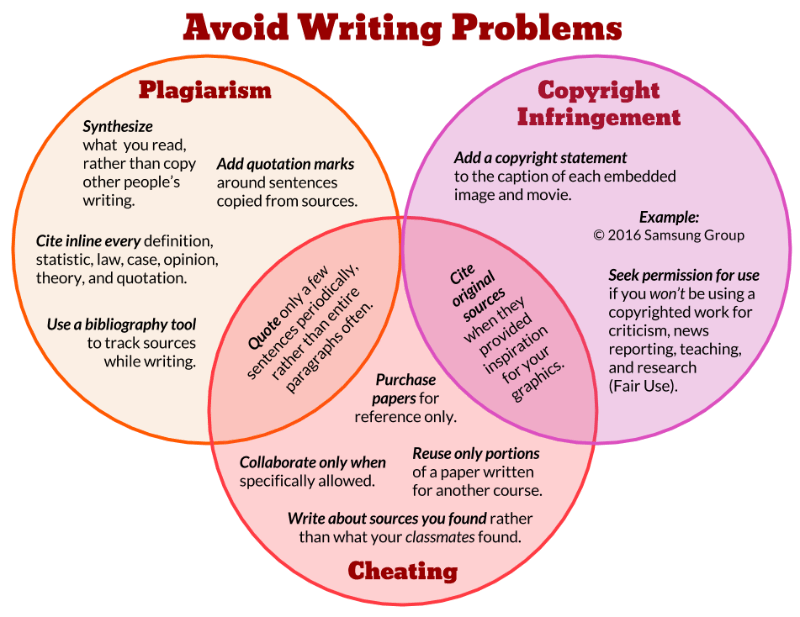Avoiding Plagiarism
Text of collaborations, discussions, and projects must be your original writing except for a few key quotes that are accompanied by a citation. Adhere to OSU policies.

Avoid Writing Problems Diagram Transcript
- Plagiarism is defined as "copying words or ideas from someone else without giving credit". (TurnItIn 2017)
- Synthesize what you read, rather than copy other people’s writing.
- Add quotation marks around sentences copied from sources.
- Quote only a few sentences periodically, rather than entire paragraphs often.
- Cite inline every definition, statistic, law, case, opinion, theory, and quotation.
- Use a bibliography tool to track sources while writing.
- Copyright Infringement is defined as "reproduced, distributed, performed, publicly displayed, or made into a derivative work without the permission of the copyright owner." (USA Copyright Office 2017)
- Add a copyright statement to the caption of each embedded image and movie: Example: © 2016 Samsung Group
- Seek permission for use if you won’t be using a copyrighted work for criticism, news reporting, teaching, and research (Fair Use).
- Cite original sources when they provided inspiration for your graphics.
- Cheating is defined as the breaking of rules to avoid difficult work.
- Purchase papers for reference only.
- Reuse only portions of a paper written for another course.
- Collaborate only when specifically allowed.
- Write about sources you found rather than what your classmates found.

